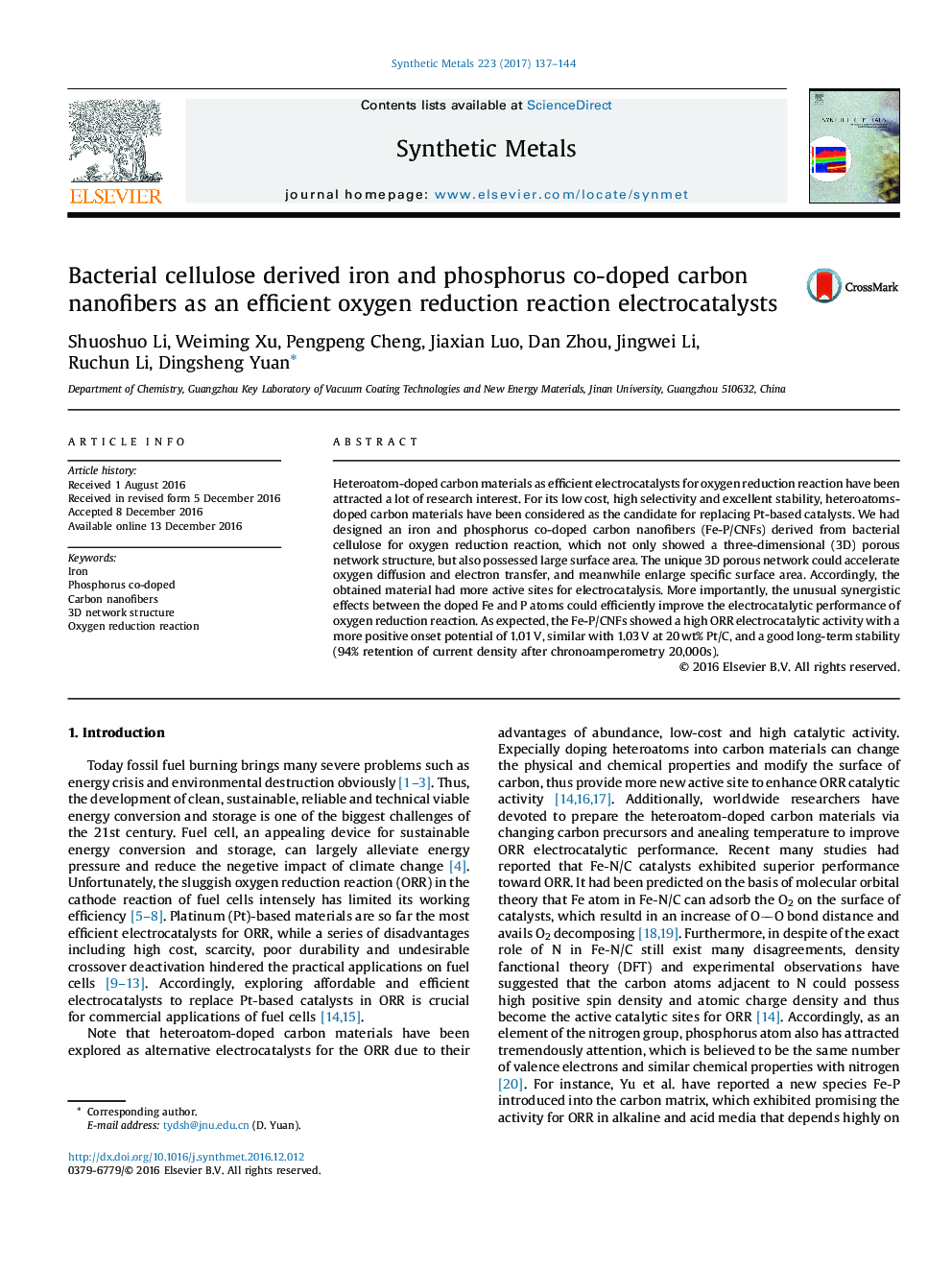| Article ID | Journal | Published Year | Pages | File Type |
|---|---|---|---|---|
| 5435662 | Synthetic Metals | 2017 | 8 Pages |
â¢A Fe-P/CNFs electrocatalyst had been successfully synthesized.â¢Fe-P/CNFs possessed a 3D porous network structure and large surface area.â¢Fe-P/CNFs for ORR exhibited good electrocatalytic activity.â¢Fe-P/CNFs were considered as a potential candidate for replacing Pt-based catalysts.
Heteroatom-doped carbon materials as efficient electrocatalysts for oxygen reduction reaction have been attracted a lot of research interest. For its low cost, high selectivity and excellent stability, heteroatoms-doped carbon materials have been considered as the candidate for replacing Pt-based catalysts. We had designed an iron and phosphorus co-doped carbon nanofibers (Fe-P/CNFs) derived from bacterial cellulose for oxygen reduction reaction, which not only showed a three-dimensional (3D) porous network structure, but also possessed large surface area. The unique 3D porous network could accelerate oxygen diffusion and electron transfer, and meanwhile enlarge specific surface area. Accordingly, the obtained material had more active sites for electrocatalysis. More importantly, the unusual synergistic effects between the doped Fe and P atoms could efficiently improve the electrocatalytic performance of oxygen reduction reaction. As expected, the Fe-P/CNFs showed a high ORR electrocatalytic activity with a more positive onset potential of 1.01Â V, similar with 1.03Â V at 20Â wt% Pt/C, and a good long-term stability (94% retention of current density after chronoamperometry 20,000s).
